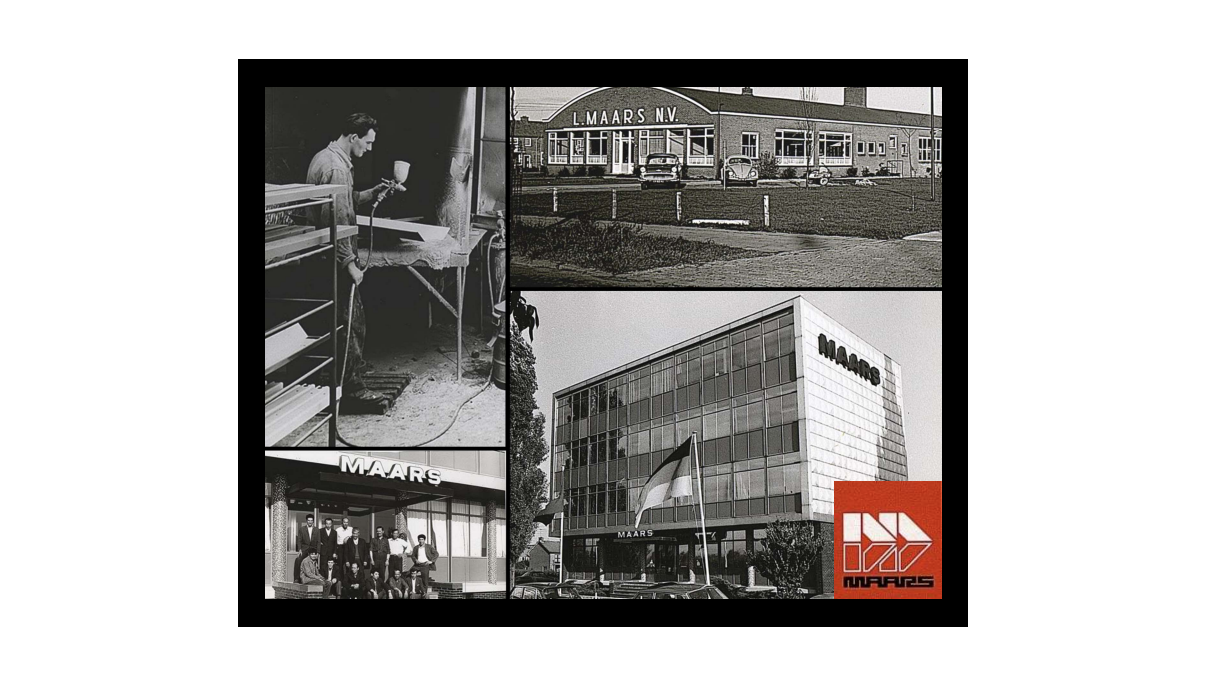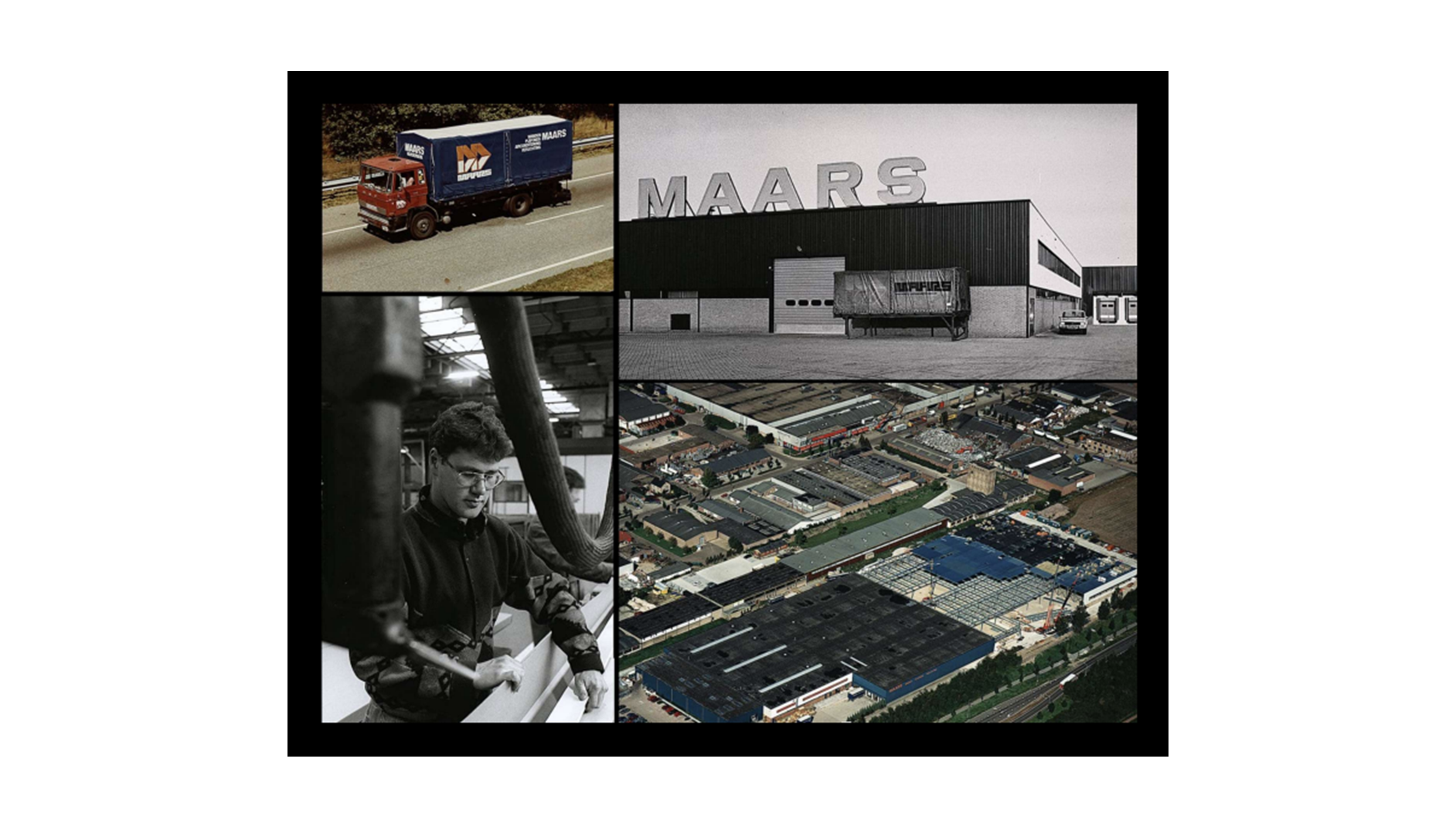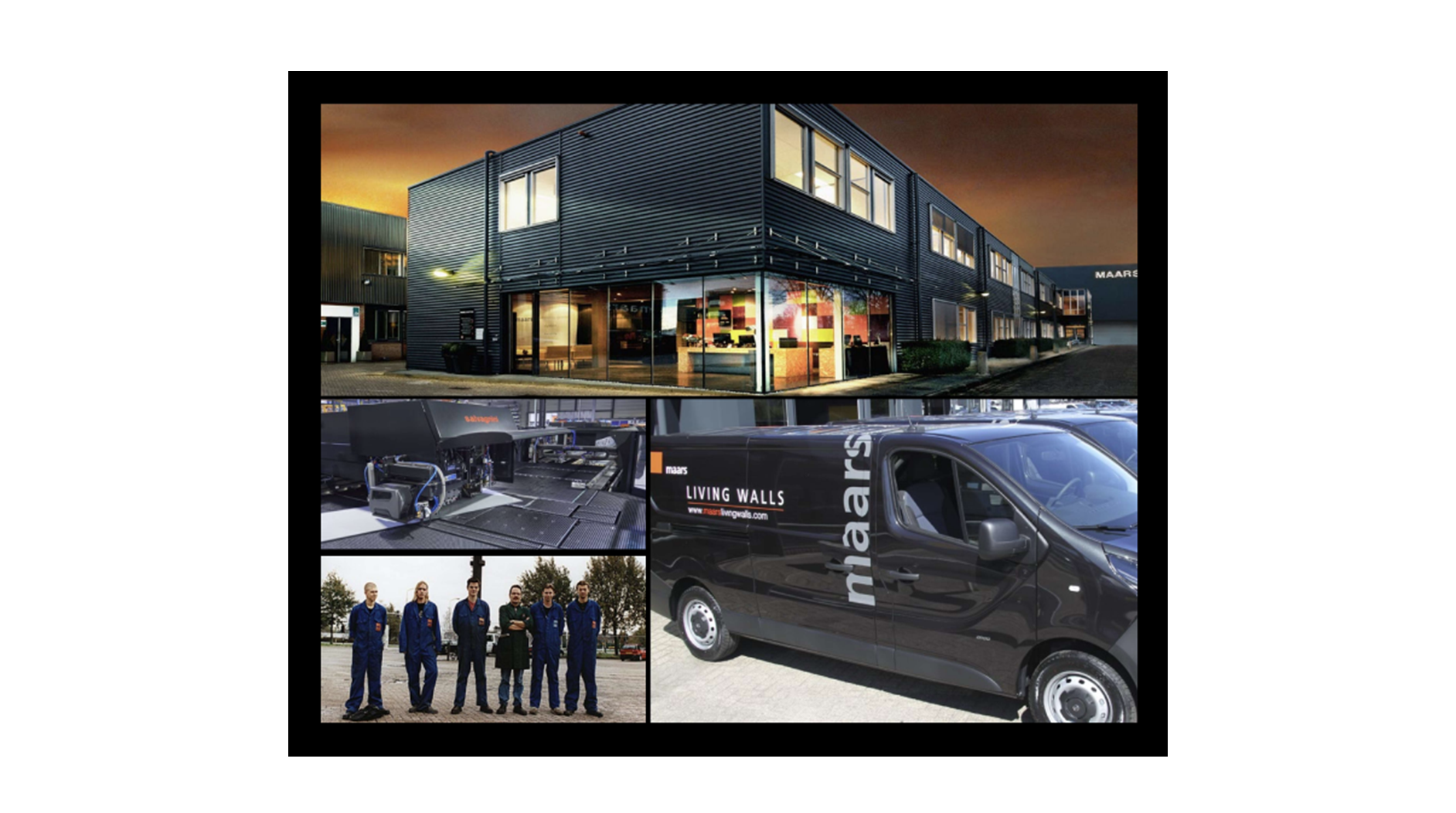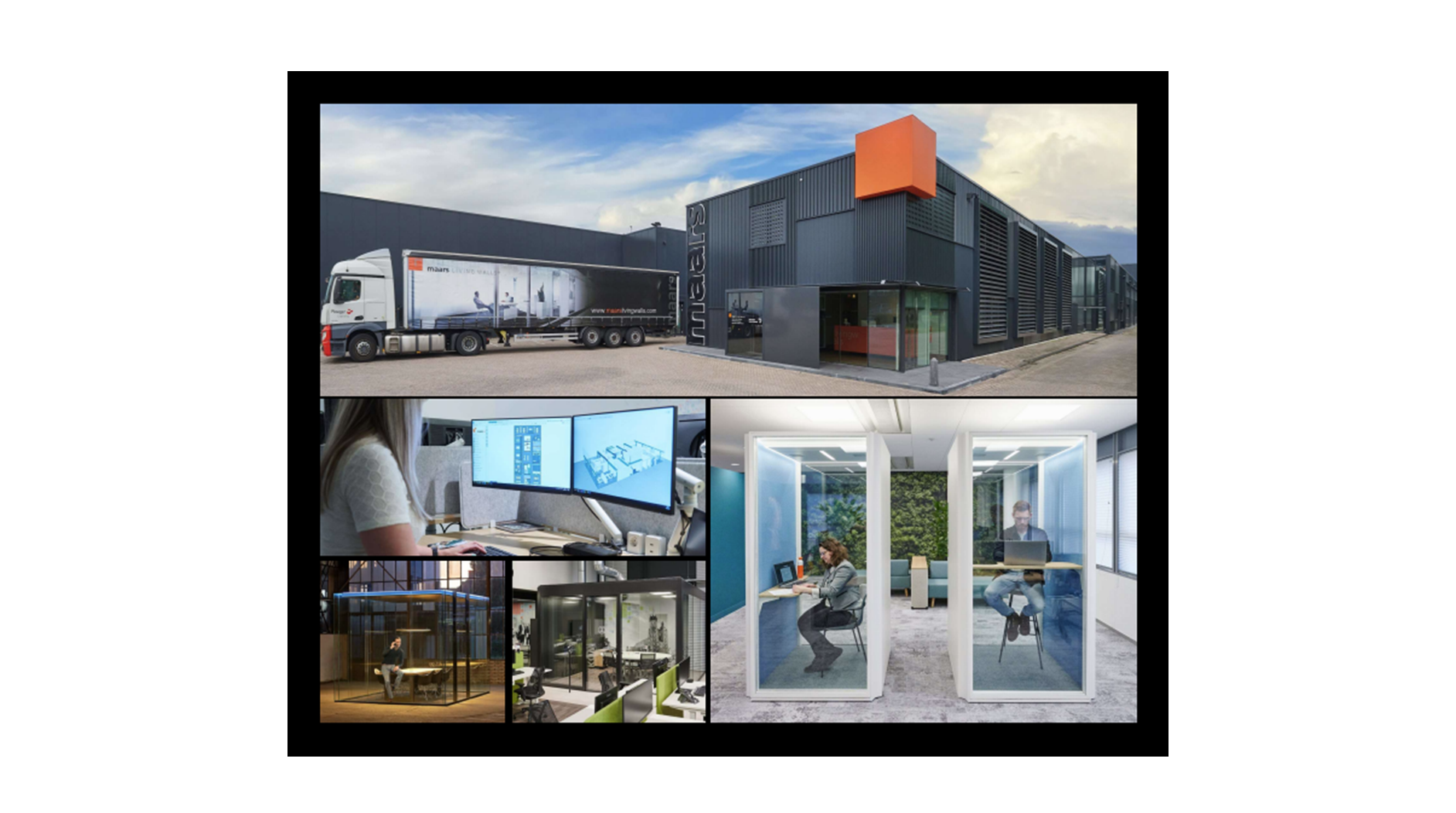Maars History
75 years of world class solutions
From 1946 to the present, from Amsterdam to Harderwijk. The origins of Maars trace back to a canal house in Amsterdam, shortly after World War II. Here in 1946, Mr. L. Maars Sr. (1910 – 1995) began manufacturing and selling fluorescent light fixtures with four employees.
1946 - 1960: The Keizersgracht in Amsterdam
For some time, Maars had been a supplier of lighting components to companies like Philips when the decision was made to launch a fully self-developed lighting fixture: the Fluor Line was born.
In the 1960s, the product range expanded to include modular ceilings, Styleline partition systems, and climate control systems. This created a complete package of lighting, air, walls, and ceilings.
The company soon outgrew its location at the Keizersgracht in Amsterdam.

1960 - 1974: It is getting busy at the Deventerweg in Harderwijk
In 1960, Maars relocated to a spacious site on the Deventerweg in Harderwijk. Just as the Model T-Ford revolutionized transportation, the Styleline wall did the same for interiors. In 1966, the very first partition wall was manufactured in the factory and only needed assembly on-site, marking a revolution in office construction. This revolutionary system is still widely used today!
As a natural progression from marketing lighting fixtures, Maars introduced suspended ceilings in Europe in 1968. Lite Line ceilings concealed all installations, such as lighting and air systems, from view, which led to the demand for integrated air grilles. These integrated air grilles were named Blow Line and fit seamlessly into the Lite Line ceilings.

1974 - 1998: Revolutionary player in the market
In 1974, production of profiles—the foundation for walls and ceilings—began in the new production hall on Newtonweg, Harderwijk. This development even made it attractive to expand activities abroad. Mr. Maars Jr. became the director and owner in 1979, during which time the company entered a new phase of growth. The product range was expanded and adapted at just the right time. The first major upgrade to the Styleline Standard came in 1981 with the Styleline Variant. This wall stood out from its predecessor with a number of refined features.
To serve the higher-end market and cater to the growing influence of architects, Maars acquired the company Intersign in 1992, along with its high-quality steel design wall of the same name. In 1996, demand for premium partition systems increased. In 1997, Maars further expanded its offerings with the new Metaline partition system. For the first time in history, a wall was developed with a flat and sleek appearance, without visible connection profiles between the modules—once again causing a revolution in the world of partition walls!

1998 - 2018: Developments and Milestones
Since 1998, Maars has become a unified entity, following the merger of Maars Production with Sales, Projects, and the Holding’s staff departments. From that point on, all activities took place at the Newtonweg location. The total production hall expanded to 40,000 m². In 2001, there was a Management Buy-out of Maars Lighting Systems, and in the same year, Saint-Gobain acquired Maars’ ceiling activities (API). From then on, Maars focused entirely on partition systems.
Key milestones, both in aesthetic and technical innovation, included the 2000-2001 introduction of the String product line with wooden panels, followed by the versatile String² in 2005. In 2008, the single-glass partition Glassline was introduced, and in 2009, the double-glass partition Panorama made its debut. Responding to the growing demand for design and transparency, Maars collaborated with a globally renowned architectural firm in 2014 to launch the fully double-glazed design wall ‘lalinea’, once again revolutionizing the partition system range through newly developed technologies.
As a response to the increasing demand for cubes in open-space offices, the lineaCube was introduced in 2015. In 2016, the single-glass partition Glassline was replaced by Horizon, which seamlessly complements the minimalist profiles of lalinea. Also in 2016, Maars decided to restore the collaboration with Maars Lighting Systems (MLS), marking a return to its roots.

2018 - now: Hybrid working
The first room-in-room solution was introduced as early as 2008, but this concept gained significant momentum after 2018. Open work environments demand both flexibility and openness. At the same time, there is a desire to create spaces within these open environments for (brief) meetings, social interactions, and efficient work. Following the earlier development of the LineaCube, Maars introduced the Core and Halo office pods in 2022.
Maars itself has also seen significant developments. In 2018, a Salvagnini machine—a fully automated sheet metal processing system—was introduced for the first time, minimizing waste. Maars 4D, our extension of CET Designer, has been continuously developed since its initial use in 2014. This software provides a comprehensive solution, allowing the design, sales, and ordering process to be executed quickly and accurately. In 2021, we celebrated our 75th anniversary, and the Harderwijk headquarters received a complete restyle.

